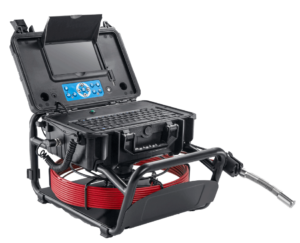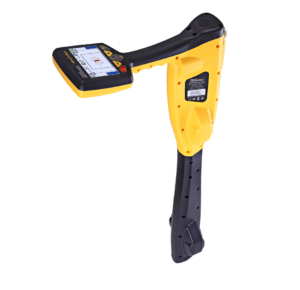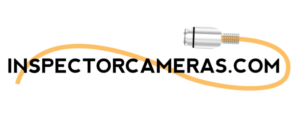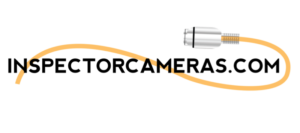In part one of this series, I explained how adding a sewer scope evaluation to your home inspection business is a good way to generate additional revenue. A sewer scope inspection will reduce liability for the buyer, property owner, real estate agents, and most importantly, for you as the inspector. Additionally, adding sewer scope services will add $150 to $300 to your inspection fee. You should always recommend a sewer or drain line inspection in your home inspection report, even if you do not offer a sewer scope as part of your services.
In this article, I want to touch on contracts/inspection agreements, inspection limitations as well as camera options and features.
 Contracts/Inspection Agreements
Contracts/Inspection Agreements
I recommend that you always use a separate contract or inspection agreement when performing a sewer scope inspection, just as you would for a regular home inspection. Any contract or agreement should be reviewed by an attorney, of course. The contract protects the inspector and defines the limitations of the sewer inspection. Your contract should indicate the fee for your standard sewer scope service and show added fees, if any, for unusual conditions. You should indicate if there is a minimum service fee in the event the sewer scope inspection cannot be fully completed, due to site conditions such as restricted access due to a lack of cleanouts, inoperable cleanouts, and/or damaged or deteriorated pipes where access will cause damage to the system.
As experienced home inspectors, you know how to define and set expectations for your regular home inspection clients; you should do the same for your sewer scope inspection clients. The sewer scope inspection is performed on the accessible portions of the system, typically the drain line, starting at the foundation and going out to the city, municipal or community system. A typical sewer scope inspection does not include the interior drain, waste or vent pipes.
Limitations and Restrictions
Home inspectors are trained to conduct visual inspections only. You typically remove covers and access panels for your visual inspection, but a home inspector does not dismantle equipment or perform repairs during a home inspection; you inspect and report what you see. If a system or component is not accessible, you report it as such. I recommend the same standard be used for a sewer scope inspection. Removing a toilet to access a drain is beyond a standard inspection and in many jurisdictions requires a plumber’s license. Cutting open a pipe riser to install a cleanout is beyond what should be done during a sewer scope inspection. If access is not possible or restricts what you can see or inspect, then report what is inaccessible and recommend access be provided.
I am often asked, “what if I cannot get beyond a defect such as a blockage or collapsed pipe, how do I inspect the rest of the sewer line”? The simple answer is you do not. You document and report what you see. You have finished your inspection—discovered a problem and will recommend that a professional drain cleaner, plumber or sewer professional evaluate and repair as required. Your job is not to clear the line or remove the blockage. Your camera system is a precision visual instrument that should not be used as a drain cleaning device! Plumbing contractors, drain cleaning and pipe lining companies have specialized equipment designed to clear and open drains. High pressure jetting equipment, root cutters, pipe bursting and pipe lining equipment are used to clear lines and provide permanent repair as required. This specialized equipment costs tens of thousands of dollars and requires specialized training and experience to operate. Leave the cleaning and repairs to the professionals.

Scout 3-Pro with a Self-Leveling Camera Head
Scoping Equipment
I want to shift the discussion to camera equipment—the desirable features, and some available options you will need to consider when purchasing a camera system. There are different types of camera heads to choose from. Camera heads are available with a fixed lens, where the camera head’s internal lens does not rotate. With these, the picture you view will be sideways or upside down, depending on camera orientation within the sewer pipe. Typically, this is not a problem for a trained operator, but may make picture or video viewing more difficult for a client or real estate agent. Self-leveling camera heads are more popular. These camera heads have an internal precision bearing and counterweight system that rotates the internal lens by gravity, so the picture view is always right side up. Pictures and video provided to clients are then easier to understand and interpret.
Mechanical articulating camera heads are also available. These camera heads use small internal motors to rotate and orient the lens for a “side view.” Camera systems with this type of camera head are more expensive and often cost more to maintain and repair over time. These articulating camera heads also have a larger overall exterior diameter that may make movement through smaller diameter pipes more difficult. In our opinion a self-leveling camera head is the best choice for home inspectors performing sewer scope inspections.
Your camera system should have a meter or foot counter so that you can report to your client “how far out” the defect or issue is. The counter typically displays on the viewing screen and shows how many feet or meters of push rod cable has unwound from the reel. Always remember to subtract any length of cable not actually inside the pipe. The distance to the defect is from your entrance point or foundation wall. The cable length “on the floor” does not count. Some cameras have a “zero” feature allowing the counter to be reset to zero and start when the camera head is at the foundation wall or pipe entrance point.

VLOC-3 Locator
Locating
Many inspectors choose to “locate” or show the client where the defect is out in the yard or driveway. This additional information is optional and not required as part of the sewer scope inspection. The decision to locate the problem is really a business decision regarding the level of service you want to provide. Locating requires optional equipment and adds time to your inspection process, so should be factored into your fee structure.
To locate the blockage you will need an optional “sonde” and a “receiver.” The sonde is simply a radio transmitter built into the camera head. This transmitter broadcasts on a fixed frequency, often 512hz. The radio receiver is called the locator. The inspector performs a patterned walking search of the exterior using the locator. The locator device has built-in circuitry that interprets the incoming radio signal and gives the inspector visual and audio feedback allowing him/her to find where “X” marks the spot. Some locators provide estimated depth information but it should be understood that locator accuracy may be affected by many factors such soil type, moisture levels and even outside electronic interference—like an electric dog fence or nearby florescent lighting. When reporting location, it is wise to include a clause indicating that all location and depth information should be confirmed by the professional hired to perform repairs.
The decision to offer locating services is up to each inspector. Inspectors purchasing the camera systems we provide are evenly split 50-50 on the sonde option. If you know you will never provide location services, there is no need to have the added expense of including a sonde transmitter with your camera system.
Cable Length
Finally, a few words about which cable length is best. In short, every cable has compromises; there is no perfect cable length. One company, Ridgid, provides multiple cable reels to fit a variety of their camera monitors. Each reel choice is designed to satisfy a narrow set of conditions. This concept works well if your budget allows. Plumbing contractors may own multiple reels and monitors and use the appropriate setup as required on a job site. These contractors also have large work vans to carry the equipment and higher budgets than is typical for a home inspector.
A home inspector typically has one camera system, so their system must perform adequately across a wide range of conditions. A balance must be achieved between cable flexibility and stiffness also. A stiff, 200-foot cable will not perform as well in a two-inch pipe with tight elbows. A flexible cable designed for smaller pipe diameters will not push out extremely far into a larger pipe.
Our experience has found that equipment designed for pipes between one and a half and four inches with a minimum cable length of 100 feet is a good starting choice for home inspectors. Try to keep the camera head diameter as close to one inch as possible to allow use in smaller pipes. If the camera head is one-and-a-half inches, it is difficult to use in one-and-a-half or two-inch pipes. Once your business grows you can consider adding a larger system that will go out to 200 ft.
If you have questions about sewer scoping and our products, please contact us today, and we will be happy to help!


